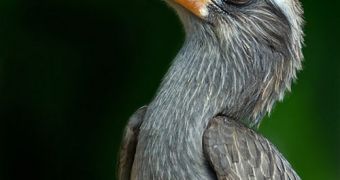Investigators say that they are currently seeing an amazingly-high rate of beak deformities in wild bird species. They add that no clear cause for this has yet been discovered, and reveal that one possible culprit could be the extensive damage the birds' habitats are suffering today.
Biologists think that this may be a signs of a growing environmental health problem, that is forcing physical changes in higher animals. Deformed beaks prevent the birds from cleaning or feeding themselves, which ultimately results in their deaths.
Species in the US Northwest and Alaska have been found to exhibit the highest incidence rate of such deformities, and researches at the US Geological Survey (USGS) Alaska Science Center (ASC) decided to investigate why that is happening.
Details of their conclusions appear in this month’s issue of The Auk, a Quarterly Journal of Ornithology. The changes affect Black-capped Chickadees, Northwestern Crows, and other birds too.
The condition itself is called “avian keratin disorder.” Animals suffering from yet have deficiencies of an important substance called keratin in their bodies, and this manifests itself mostly in their beaks.
In humans, the chemical is featured heavily in nails and hair, but birds feature much larger amounts in their beaks. This is the thing that gives the beaks their strength.
Without sufficient keratin, a large array of deformations can occur. The changes cause the beaks to be crossed, elongated, or overgrown, and also affect claws, skin, legs and feet.
“The prevalence of these strange deformities is more than ten times what is normally expected in a wild bird population,” explains Colleen Handel, who holds an appointment as a research biologist at the USGS.
“We have seen effects not only on the birds’ survival rates, but also on their ability to reproduce and raise young. We are particularly concerned because we have not yet been able to determine the cause, despite testing for the most likely culprits,” she goes on to say.
In Alaska alone, more than 6.5 percent of adult Black-capped Chickadees suffer from keratin deficiency-related deformities. Some 17 percent of adult Northwestern Crows are affected by the disease as well.
The most common causes for avian keratin disorders include nutritional deficiencies, environmental contaminants, and bacterial, viral, fungal or parasitic infections, the USGS report says.
“We’re seeing ecologically unique species affected across a wide range of habitats. The scope of this problem raises concern about environmental factors in the region,” explains USGS wildlife biologist Caroline Van Hemert.

 14 DAY TRIAL //
14 DAY TRIAL //